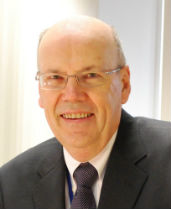New Zealand needs reliable energy for long-term growth.
We are currently in an enviable position, with ample natural resources and 80 percent renewable electricity – but we are also facing rapidly changing patterns of energy use, emerging, disruptive technologies and, above all, the challenge of living sustainably.
How can we best plan forward to get the energy resources that we all will need?
One familiar, but proven, approach is to build scenarios of what the future might hold.
To provide policy makers and businesses with insights for future planning, the BusinessNZ Energy Council has undertaken work to generate two such scenarios.
With a wide variety of participants – business, academia, government and NGOs – we held workshops that looked at two different kinds of economic and energy settings.
The first, ‘Kayak’, is a high-growth, free-trade scenario, characterised by open borders, strong immigration flows and a relatively low carbon price.
The second, ‘Waka’, is a more regulated scenario, with more protected flows of goods, services and people, a lower rate of growth and a higher carbon price.
Kayak conveys values such as freedom, flexibility and speed. Under the Kayak scenario, businesses and markets, rather than regulators, drive supply chain decisions. Innovation flourishes from freely-made business choices in a free market. In a Kayak future, businesses make informed choices to meet their own interests based on price and quality (including environmental quality).
Waka conveys values of planned coordination, interdependence, and collective welfare. In the Waka scenario, business and consumers rely more on government to make decisions in the national interest, particularly to meet the country’s environmental commitments and manage the impact of growth on our resources.
Each scenario brings with it a different type of New Zealand. For example, compared to today’s GDP of $215 billion, by 2050 the Kayak scenario would see New Zealand’s GDP at around $500 billion, with the Waka scenario around $400 billion.
Under Kayak, New Zealand’s population would grow from 4.5 million today to around 6.15 million; under Waka it would be around 5.55 million.
The carbon price under Kayak would be $60 per tonne of emissions; under Waka it would be $115 per tonne.
There are of course many things which are uncertain to us now that will shape the future New Zealand.
The workshops wove together combinations of the most critical uncertainties to New Zealand’s energy future to produce the two plausible scenarios.
The scenarios were then quantified and modelled in partnership with a Swiss research centre, the Paul Scherrer Institute.
This is the same process as was used by the World Energy Council in its 2013 study World Energy Scenarios: Composing Energy Futures to 2050.
Like the global study, New Zealand’s scenarios have not sought to create roadmaps or recipes.
Instead, they are intended to help us prepare for a diverse set of possible futures by asking the right questions to make better informed choices.
The scenarios show that our abundance of renewable sources of electricity presents us with an opportunity for transformative change: powering our light vehicle fleet with electricity.
The Waka scenario highlights the outstanding ability of the transport sector to make serious reductions in emissions, by putting on the road two million cars powered by renewable electricity.
In contrast the Kayak scenario, with a lower carbon price, sees a predominance of fossil fuel vehicles.
This distinction raises the question of how greater uptake of electric vehicles can be achieved, given the interconnectedness of oil-based fuel prices, carbon price, electricity prices, infrastructure and rapidly changing technology.
Ultimately, we must make hard choices that balance policy outcomes across dimensions including energy security, equity, and environmental sustainability. This, in turn, affects how confident consumers will be that they are being well-served by the energy system.
Kayak and Waka demonstrate the trade-offs required when balancing these dimensions.
They also highlight that, given the global nature of many of the uncertainties, decisions made now need to be resilient to many potential futures – we shouldn’t risk betting the farm on just one view of the future.
Kayak and Waka will assist these decisions by providing a platform and framework for discussing different views of the future.
Inevitably New Zealand will paddle somewhere in between the two.
But, as we debate our views of the future, and the trade-offs, it would be helpful to have a common vocabulary.
How well we make the choices and the trade-offs required will define our energy future and affect our way of life in many different ways.
With the scenarios launch on 14 October, I look forward to these ideas provoking debate and challenging our thinking. The full report will be available on the BusinessNZ Energy Council website www.bec.org.nz.
David Caygill is Chair of the BusinessNZ Energy Council – a group of businesses and organisations working for a sustainable energy future for New Zealand.
Email:
